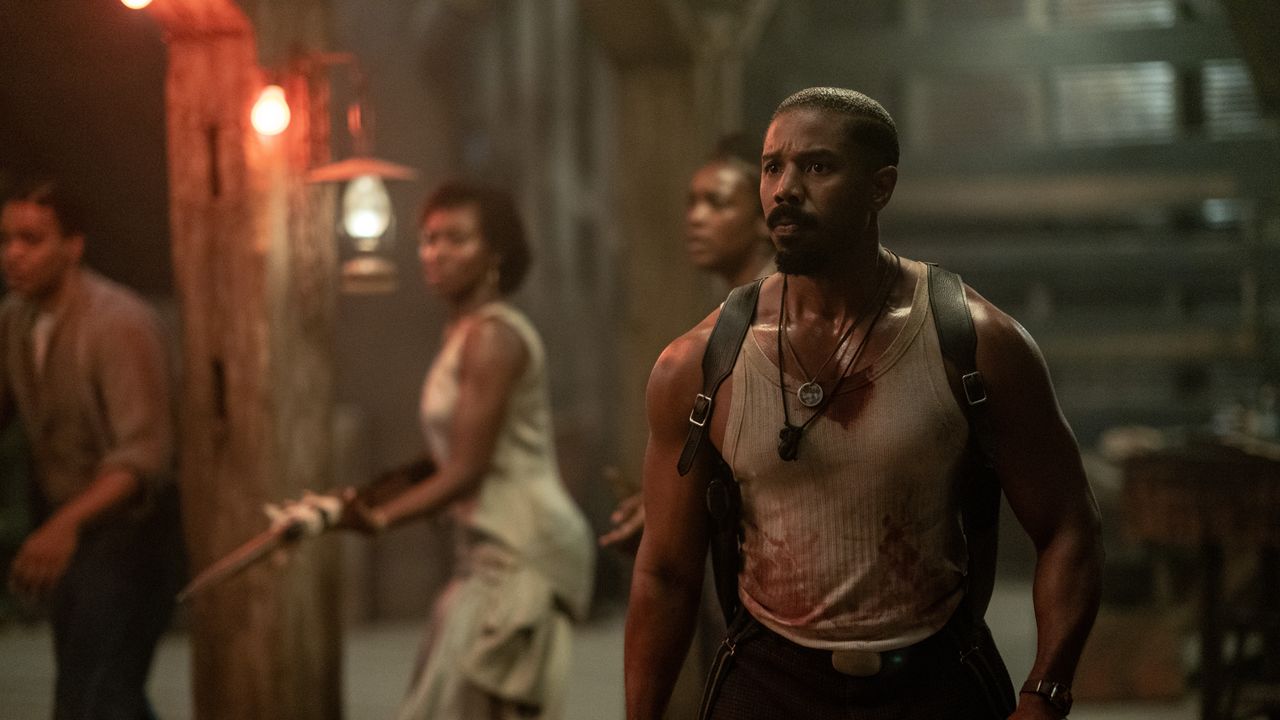After a decade of Creed films and Black Panther movies, it’s a thrill to see writer-director Ryan Coogler—one of the great populist Hollywood talents
After a decade of Creed films and Black Panther movies, it’s a thrill to see writer-director Ryan Coogler—one of the great populist Hollywood talents working today—do something fresh. Though his latest film, Sinners (in theaters April 18), traffics in familiar horror-action tropes, its milieu and thematic arguments feel novel to the genre. Big, ambitious, and erratic, Sinners is a wide-appeal studio movie from a filmmaker breathtakingly adept at the form.
Sinners is set in 1933 in the Mississippi Delta, where Black sharecroppers still work the cotton fields nearly 60 years after the end of slavery. Jim Crow laws bear down on these industrious communities, while the Ku Klux Klan lurks at the edges, ready to pounce. Amidst that oppression and fear, a spirited culture—of church life, of emergent blues music—thrives. Coogler’s film is a tribute to those traditions, and a sorrowful, furious acknowledgment of the waves of aggressors who, decade after decade, have come to seize or destroy them.
At the outset of the film, two prodigal sons have returned home. They’re twins who fled an abusive father for the freedoms, both real and only imagined, of Chicago, where they went to work for mobsters. Their names are Smoke and Stack, both played by a commanding, wily Michael B. Jordan. Coogler’s muse (this is their sixth film together; Coogler has directed four of them) is in fine movie-star form in Sinners, alluring even in moments of menace. The brothers’ plan, coolly elucidated by both Jordans, is to utilize the ill-gotten gains they’ve brought back from the North to open a juke joint, far from the prying eyes (and worse) of white people. They will, in essence, create a communal space for those who like to drink, dance, gamble, and otherwise carouse. It’s a scrappy and reckless dream, and a hazardous one.
The first half of the film is about the process of making something, following the brothers as they commission local musicians to play at their venue—chief among them their talented adolescent cousin, Sammie (newcomer Miles Caton, making an auspicious debut)—and attempt to attract crowds and solicit ancillary business. An electrifying momentum builds, Sammie watching in giddy awe at what feels like the dawning of a fresh era of his life. Early in the film, Coogler introduces a concept, found in folklore across many cultures, that there are some uncommon people capable of making music with such fire that they conjure spirits, benevolent ancestors and demons alike. It seems that preacher’s son Sammie, who can wail on a guitar and sings in a plaintive deep baritone, is just such a figure. The juke’s opening night will be a realization of that mystical prowess.
Given the time and place, it’s all too likely that trouble is rushing up to greet this fervid and merry occasion. Antagonism comes in the form of a mysterious man, Remmick (Jack O’Connell), possessed of his own lilting musicality and a hunger for human blood. Sinners is a vampire movie, one that has tense fun with all the elderly rules—garlic, wooden stakes, needing an invitation to enter a building—but uses them in service of a gloomy, harrowing evocation of history.
One could look at the two sides of Sinners—Black entrepreneurs, artists, and revelers versus predacious white fiends—and see an obvious intent. That is certainly a foundational tenet of the film’s thinking. But Coogler, as ever, digs deeper and complicates matters. Just as he presented a persuasive, nearly righteous villain in Black Panther (said villain was played, of course, by Jordan), in Sinners, Coogler lets Remmick make a tempting argument. It is implied that, when human, Remmick was an Irishman, and thus no stranger to the degradations and worse that come at the hands of a cruel ruling class. Vampirism, Remmick suggests, offers freedom from that—and the ability to truly, bloodily fight back.
Coogler affords Remmick and his growing brood of ghouls their own musical moments, of Appalachian folk song and elderly Scotch-Irish tunes from which that American genre evolved. They’re lovely and haunting, suggesting some common but broken bond between many peoples—penniless white immigrants, the descendants of slaves—who have found themselves in America, by choice or not, and had their culture and identities warped, maligned, mangled, snuffed out. Perhaps Sinners is urging that all are victims in a vicious class war that has been playing out in the Western world since, perhaps, that world began. It’s a provocative suggestion, one that Coogler manages to get across even when Remmick is doing gory, horrible things. And even when it is obvious that many of Remmick’s people bought into America’s racist hierarchy in exchange for a position slightly above the bottom.

COMMENTS